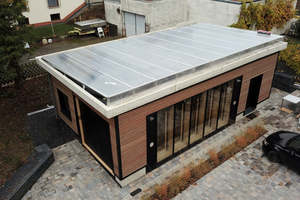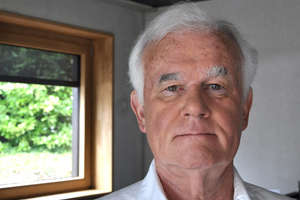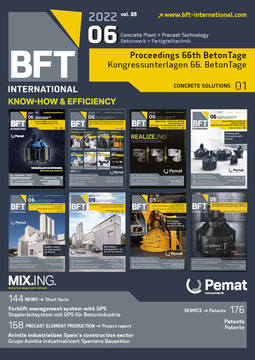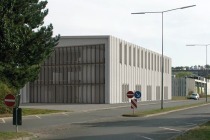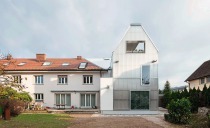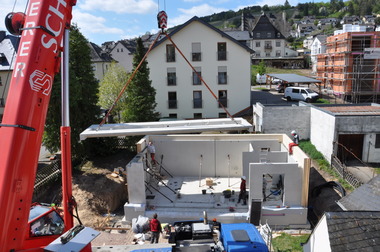Concrete heat storage and concrete absorbers contribute to climate neutrality
The future climate solution must cover our daily requirements by using renewable energy as much as possible. The development of absorbers for storing heat inside building shells plays a major role here. Classic absorbers of solar heat must be supplemented by additional systems.
Possible absorber surfaces of buildings
Vertical walls and the roof construction are available as natural absorbers. Concrete, owing to its very high thermal capacity as a construction material, reacts sluggishly to thermal energy input and therefore offers best prerequisites for energy-efficient building. So far, however, little experience is available on the performance capacity of such absorbers.
Experiments on concrete absorber surfaces
A number of construction varieties were tested for their capacity to absorb thermal energy. High thermal performance ratings are generated, among others, by black surfaces and enclosures of glass. The very high temperatures generated, up to 90 °C, increase the absorption capacity of such surfaces.
Absorbers at the Innoliving Project
Glass enclosures can be installed in front of absorbers both on vertical and horizontal surfaces. At the project Musterbau Innoliving, the roof surface was painted black and completely enclosed by a glass shell. The absorber surfaces consist of precast concrete slabs with integrated piping. The feasible heat output lies between 250-350 W/m².
A special feature is a loadbearing wall enclosed completely with vacuum insulation. A sheet of glass was installed in front of the black-painted wall. The vacuum insulation can, in addition, be opened and closed to enable heat transition. In this way, the heat behind the glass pane can flow into the wall, and the glass subsequently closed to store the heat. This multi-functional wall is thus used for collecting, storing and distributing thermal energy. Concrete absorbers are also suitable for use in the ground for withdrawing the thermal energy stored in it.

